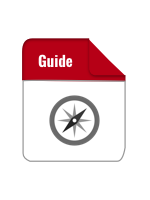Kinship Families
Checklist for Kinship Caregivers Working with the Schools
Developed by Va Department of Education’s Family Engagement Network (FEN) and Formed Families Forward, this checklist is for any kinship caregiver who is enrolling a child or youth in schools and working with schools to get appropriate services and supports.
Working with Kinship Caregivers Checklist for Schools
This checklist developed by Virginia Department of Education’s Family Engagement Network (FEN) and Formed Families Forward offers schools a checklist for school staff to use when working with relative or kinship caregivers raising children and youth.
Virginia’s Kinship As Foster Care Prevention Program: 2024’s SB 39 and HB 27
During the 2024 General Assembly, Senate Bill 39, introduced by Senator Favola and House Bill 27, introduced by Delegate Callsen, focused on increasing foster care prevention through kinship placements. The bills were passed and signed into law by the Governor on May 21, 2024.
The legislation offers protections for both the child and their family, reinforcing the goal of reunification.
This summary is based on information from Voices of Virginia’s Children.
Eligibility Criteria:
The proposed legislation outlines specific criteria for a child to be considered eligible for the foster care prevention program:
- The child is in the custody of a relative by a court order.
- The child’s parent or guardian voluntarily placed the child with a relative and has a written agreement with the local board of social services.
- The child demonstrates a strong attachment to the relative, and the relative has a strong commitment to caring for the child.
- The local department of social services has documented the need for the child’s placement with the relative, citing imminent risk of removal.
Key Provisions:
Once a child is deemed eligible, the local Department of Social Services and the relative with custody will enter into a written agreement. This agreement includes provisions for financial assistance under the Foster Care Prevention Program and may also include ongoing case management services, ensuring comprehensive support for kinship caregivers.
The local board is mandated to identify and provide necessary services and support for the child, the relative, and the child’s parent or guardian. Importantly, the legislation emphasizes due process, informing parents or guardians of their right to seek legal counsel before entering into the agreement.
Additional provisions in the agreement cover visitation arrangements, requirements for the child’s parent or guardian to meet for reunification, and safety plans in case of the child’s return home. The agreement is time-limited to an initial period up to 90 days, and provisions for extension, emphasizing the need for accountability and periodic review.
Kinship Respite Program from Va DARS
February 01, 2024A program of the Virginia Department of Aging and Rehabilitative Services (DARS):
As of February 2024, this program is available to kinship/relative caregivers.
The Virginia Lifespan Respite Voucher Program (VLRVP) provides reimbursement vouchers to Virginia caregivers for the cost of temporary, short-term respite care provided to individuals of any age, with a documented disability or medical condition.
The goal of this program is to increase access and reduce barriers to respite care, as well as enhance education and awareness about respite care. Respite funding is limited to $595.00 per family through June 30, 2026, or until funds are exhausted. This program prohibits the use of these funds for rent, cleaning, medical supplies, food, or other household expenditures. Due to its limited funding, not all eligible applicants will be approved.
2022 National Strategy to Support Family Caregivers
From the US Administration for Community Living, Health and Human Services, this 2022 National Strategy to Support Family Caregivers was created to support family caregivers of all ages, from youth to grandparents, and regardless of where they live or what caregiving looks like for them and their loved ones.
The strategy was developed jointly by the advisory councils created by the RAISE Family Caregiving Act and the Supporting Grandparents Raising Grandchildren Act, with extensive input from the public, including family caregivers and the people they support. It will be updated in response to public comments and will evolve with the caregiving landscape.
Kinship Care and the Child Welfare System fact sheet
From the National Child Welfare Information Gateway at the US Department of Health and Human Services, Administration for Children and Families, this fact sheet is designed to help kin caregivers—including grandparents, aunts and uncles, siblings, and other relatives as well as family friends caring for children— work effectively with the child welfare system.
It also includes resources, such as links to more detailed information or places to find support, to help you learn about and navigate the child welfare system.
May 2022
Supporting Educational Access for Kinship/Grandfamilies fact sheet
From the Grandfamilies & Kinship Support Network: A National Technical Assistance Center, this fact sheet address a number of key issues kinship caregivers face when support their kin in school.
Education is high on the to-do lists of kin and grandfamily caregivers. Accessing educational services for children in their care can be difficult. Frequently, kin/grandfamily caregivers lack legal custody of the children and/or are unfamiliar with the local education system. This resource is designed to help direct-service professionals assist caregivers in ensuring the children they raise have the educational experiences needed to thrive.
January 2023
Federal letter to Special Education Directors on High Quality Education for Highly Mobile Children
November 10, 2022This federal letter from the US Office of Special Education and Rehabilitative Services issued 11/10/22 to State Special Education Directors clarifies requirements for highly mobile children and youth such as military-connected children, migratory children, children who are homeless, and children in the foster care system.
Specific issues addressed are:
- Highly mobile children should have timely and expedited evaluations and eligibility determinations.
- Comparable services include services during the summer, such as Extended School Year (ESY) services.
Kinship Caregiving Options: Considerations for Caregivers
December 30, 2021Kinship Caregiving Options: Considerations for Caregivers was developed in partnership with the ABA Center on Children and the Law, Children’s Defense Fund, and Generations United, with support from Casey Family Programs. The publication provides a broad, national overview of choices that may be available to caregivers, along with related considerations, to help caregivers make more informed decisions about pathways to pursue.
How to Care for You: Self Care and Kinship webinar
Slides from a FFF-hosted webinar presented live on January 14, 2022. The presentation features Monique Lilakos, DSW, LCSW, of Higher Purpose Coaching and Mentoring, LLC. Dr. Lilakos presented on challenges faced by kinship caregivers, how self care can support resilience, and offered specific self care techniques.
Grandfamilies & Kinship Support Network: National TA Center
Generations United operates the first National Technical Assistance Center on Grandfamilies and Kinship Families (NTAC), funded through a five-year cooperative agreement from the U.S. Department of Health and Human Services’ Administration for Community Living (ACL).
Contact Generations United directly for more information. https://www.gu.org/projects/ntac-on-grandfamilies-and-kinship-families/
Adoption and Transfer of Legal Custody for Children in Kinship Foster Care: Comparison Chart for Virginia
From Generations United, updated in 2021.
This chart is designed to help kinship foster parents compare adoption and transfer of legal custody as two options that kin caregivers and the children in their care can pursue to exit foster care and create permanent families. In Virginia, children can exit foster care with their kin caregiver through adoption or transfer of legal custody.
The Case for Kinship Care: UMFS Kinship Care White Paper
This white paper explores current barriers, evidence for the benefits of kinship care, historical information on the foster care system, best practices and principles, and highlights the kinship work currently being done at UMFS. It addresses Virginia-specific barriers to kinship care.
GAO Report: HHS Could Enhance Support for Grandparents and Other Relative Caregivers
From July 2020, this report examines (1) what is known about the numbers of grandparents and other kin serving as primary caregivers for children, and the reasons for that care; (2) challenges kin caregivers face and how officials report addressing them in selected communities; and (3) the extent to which HHS has supported states’ efforts to use relevant federal programs and initiatives.
GAO analyzed U.S. Census Bureau survey and HHS administrative data; reviewed relevant literature, federal laws, regulations, guidance, and other documents; and interviewed officials from HHS, national organizations, and in four states (Mississippi, New Mexico, New York, and Ohio) and communities, selected for their relatively large numbers of grandparent caregivers and to reflect geographic and demographic diversity.








